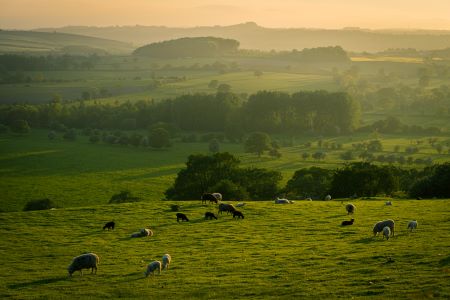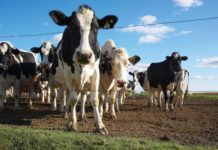Agriculture has been a critical aspect of human survival for thousands of years, providing food and livelihood for millions of people. However, wild animals pose a significant threat to crops and livestock. They cause billions of dollars in damage annually, leading farmers to search for innovative solutions to keep their farms safe from wild animals.
Below are 10 technologies helping farmers practice sustainable agriculture and protect their crops and livestock from wild animals.
1. Electric Fencing
Electric fencing is a highly effective method of keeping wild animals away from crops and livestock. The fence delivers a mild shock to animals that come in contact with it, discouraging them from entering the protected area. It’s often combined with traditional fencing to create a more secure barrier.
2. Motion-activated Sprinklers
Motion-activated sprinklers are designed to deter animals from entering a protected area by detecting movement and automatically spraying water. The sudden noise and water pressure often scare predators away, keeping them from damaging crops and livestock.
3. Sonic Deterrent
Sonic deterrents emit high-pitched sounds that irritate wild animals. Noise scares animals away, keeping them from damaging farm produce. The technology creates an aversive experience that makes the protected area unattractive to dangerous predators. The hog-pitched sounds are usually inaudible to humans and are customized to target specific species, such as deer or birds.
4. Visual Discouragement
Farmers can use visual deterrents to ward off animals with brightly colored flags, shiny objects or strobe lights. Animals find these visual distractions uncomfortable or threatening, encouraging them to keep their distance.
5. Drones
Drones are increasingly being used to monitor and protect crops and livestock from wild animals. They can be equipped with cameras, motion detectors and alarm systems to detect and alert farmers to the presence of predators. Their ability to quickly survey large areas makes them an invaluable tool.
6. Night Vision Technology
Night vision technology monitors crops and livestock overnight when many wild animals are active. It allows farmers to see in low light conditions so they can detect wild animals before they harm crops and livestock.
7. Smart Trapping
Smart trapping systems use remote sensors, cameras and alarms to detect and alert farmers to the presence of wild animals. They can be programmed to automatically trigger traps when predators are perceived, reducing the time and effort required to manage them.
8. Motion-activated Lighting
Motion-activated lighting is a simple and effective way to deter wild animals from entering a protected area. Setting the activation range and duration while integrating it with alarm systems allows farmers to conserve energy and protect their crops and livestock from invaders. Nocturnal species will be scared away by the sudden and startling lights.
9. Robot Dogs
Robotic canines are designed to mimic the appearance and movements of real dogs. They can be trained as livestock guardian machines to protect farms from predators. These robots can be programmed to bark a warning at wild animals that approach livestock too closely, keeping predators at bay and alerting farmers to the presence of invaders.
10. Chemical Repellents
Chemical repellents are designed to make crops and livestock unappealing to wild animals. They can be applied directly to plants or the surrounding area and range from natural substances such as vinegar or hot pepper to synthetic sprays. Strong scents like this can deter predators from approaching unwary livestock.
Keep Farms Safe From Wild Animals
Technology is pivotal in helping farmers practice sustainable agriculture while protecting their crops and livestock from wild animals. Various innovative technologies are available, from electric fencing to motion-activated sprinklers to drones to smart trapping systems. These methods help farmers reduce the risk of loss and improve their productivity.









[…] Source link […]
Comments are closed.